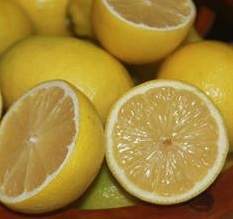Citrus is a genus of plant that includes lemons, oranges as  well as other similar and commonly cultivated fruits.
well as other similar and commonly cultivated fruits.
They are thought to have been cultivated in the ancient world (Egypt, Greece and Mesopotamia) as early as 4,000 BC. The “citron” is referenced in the Bible in the Old Testament. It’s known that citrus were grown in Spain by the end of the middle ages. Columbus brought limes from the West Indies to Spain in 1493.
Citrus classification is not straightforward from a botanical perspective. Many varied types of citrus have emerged because both hybridization, sports, and apoximis occur readily in the genus.
- There have been reputable authorities that recognize as few as only one species (Citrus medica); who claim all of the varieties we have are sub species or cultivars developed from that single species.
- Two major classification systems were developed and widely used in the 20th century. One system was developed in 1943 (called the “Swingle System”, after an American Botanist who was the main person developing this system). Another system was developed by a Japanese botanist called Tanaka at the University of Osaka (1954-77). The Swingle system identified 16 species, Variations on the Swingle system that followed identified more species. The Tanaka system identified 162 Citrus species.
- Many authoritative Western references refer to around 15 to 20 species, and many hybrids.
- Some authorities include other genera within the genus Citrus (eg. Microcitrus was for a long time considered a separate genus, but is today often considered a sub group within the genus Citrus.
- Hortus Third (from Cornell University) suggests around 16 species (1976, USA), as does the RHS Encyclopedia of Plants (1996, UK).
- Swingle in 1944 recognised two different sub genera, one with edible fruits, the other inedible fruits. Citrus subgenus Citrus was considered to have 12 edible species, and Citrus subgenus Papeda was considered by Swingle to have 6 inedible species.
- Chemical analysis in taxonomic studies during the 1980's (Scora & Kumamoto) suggested that the subgenus Citrus only contained four allopatric wild species – C. halimii, C. maxima, C. medica and C. reticulata
The classification of citrus has become so confused through such extensive interbreeding, that some experts consider that there may be argument to abandon the use of the Linnaean system for classifying different types. The fact remains though, that the many botanical taxonomic conventions that are used within that system, would in all likelihood, afford that system the most accurate way of classifying different types.
There are valid scientific arguments that would support a variety of seemingly conflicted opinions about citrus classification. Anyone dealing with citrus names should avoid becoming too opinionated or pedantic.
Other genera, including Microcitrus, Fortunella and Poncirus are botanically close, and have in fact cross bred with Citrus, to produce a range of intergeneric hybrids Many of these plants are commonly grouped with citrus, and called citrus.
Microcitrus
Microcitrus is listed in Hortus Third as a genus with 5 or 6 species from Australia and New Guinea. Microcitrus australasica (Australian Finger Lime). Species include:
Microcitrus australis (Australian Round Lime)
Microcitrus garrowayi (Garroways Australia Wild Lime)
Microcitrus inodora (Large Leaf Australia Wild Lime)
Microcitrus maideniana (Maiden’s Australian Wild Lime)
Fortunella
Fortunella (Kumquats or Cumquat) are very closely related and prior to 1915, were considered to be in the genus Citrus. They look like Citrus, and the only really obvious difference tends to be that they have a sweeter more edible and less pulpy skin to the fruits. Species include:
Fortunella japonica (Round cumquat, or Marumi Cumquat)
Fortunella margarita (Oval Cumquat, Nagami Cumquat)